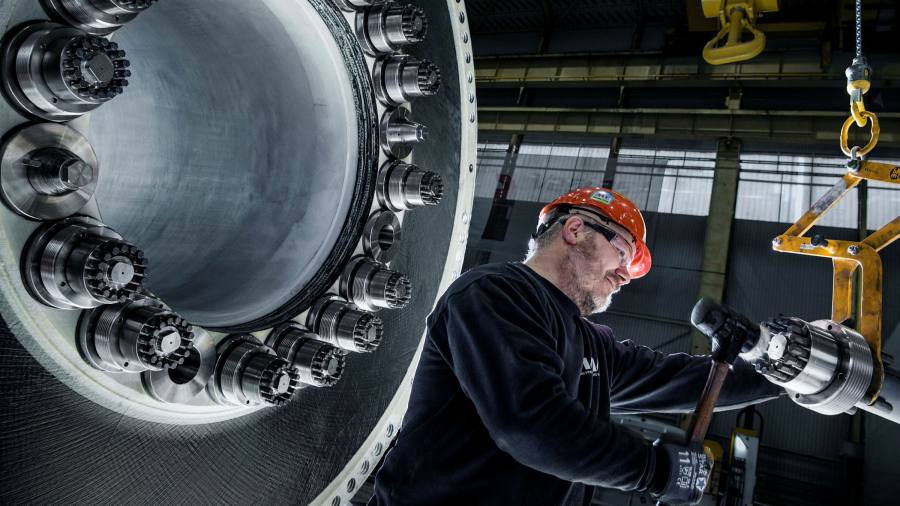[ad_1]
Vestas is to build the world’s biggest offshore wind turbines as the Danish group works to lower the sector’s costs.
The company said on Wednesday the giant turbines would stand 260m tall, almost equal to the City of London’s highest skyscraper, as it works to catch up with rivals such as GE and Siemens Gamesa, which already produce turbines that are nearly as large.
“Every country and every continent is starting to do a lot of planning for offshore,†said Henrik Andersen, Vestas chief executive. “The whole technology will help to reduce the levelised cost of electricity,†he added, saying the growing scale of new offshore installations would help bring costs down.Â
Larger wind turbines are able to produce more power per turbine, lowering the cost of overall construction. The blades of the new turbine are 115m long and the “sweepâ€, or area covered by one blade rotation, is equivalent to about six football pitches.
Offshore wind installations are expected to surge in the next few years, particularly in the UK, where Prime Minister Boris Johnson has vowed to make the country the “Saudi Arabia of windâ€.
An auction this week for English and Welsh offshore wind development rights attracted record prices from oil majors including BP and Total, as well as new entrants to the UK market such as German utility EnBW.Â
However, the new chief executive of Danish offshore wind developer Orsted warned on Wednesday that the “very high prices†in the UK auction risked making offshore wind “less competitive†against rival energy technologies.
“We think that’s a big shame because offshore has such huge potential in all of Europe and essentially across the world,†Mads Nipper told the Financial Times after announcing Orsted’s move into Poland’s fledgling offshore wind market via a joint venture with the country’s state-run energy group PGE.
The record prices bid in the UK would also probably result in higher electricity bills, Nipper warned, as the winners would have to recoup their costs somehow or risk the projects being unprofitable.
Analysts expect the winning bidders, which also included Spain’s Cobra group and Macquarie’s Green Investment Group, will push up prices in future subsidy auctions, where wind farm developers try to secure a guaranteed price per unit of electricity generated from the UK government.Â
Nipper refused to single out any particular bidder but said: “Our major concern is what it would over time mean for the industry, it is very high prices and somebody has got to pay for it.â€
Vestas, which manufactures turbines and sells them to wind developers such as Orsted, reported slightly lower profits for 2020 than the previous year, and the company’s share price dropped 2 per cent in early trading on Wednesday. While Vestas’s revenues rose 22 per cent last year, earnings before interest and tax fell 25 per cent, partly because of increased production costs related to the coronavirus pandemic.Â
Andersen also admitted that Vestas was a latecomer to producing giant turbines. “In 2019-2020, we did not get the technology road map right, we were not competitive versus the GE and Siemens alternatives in that period . . . that is why we are taking a different step in technology today.â€
[ad_2]
Source link





